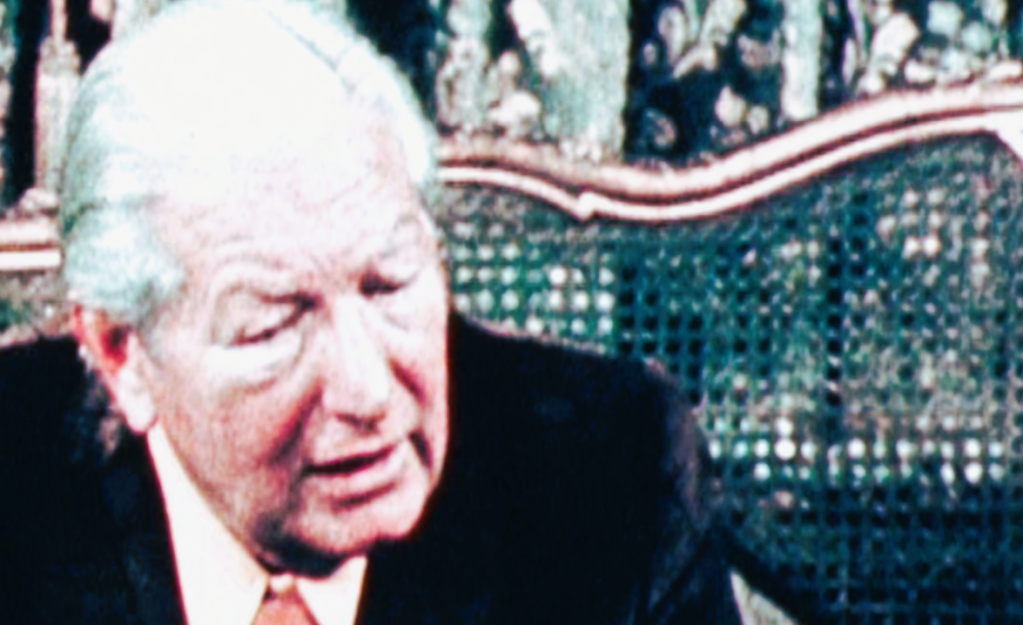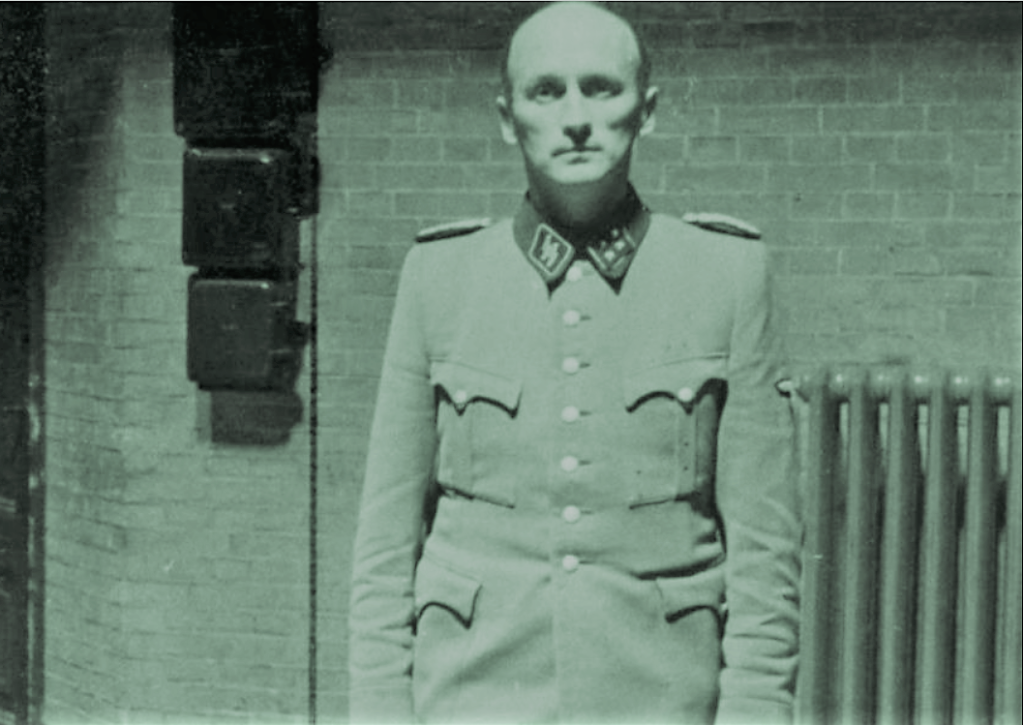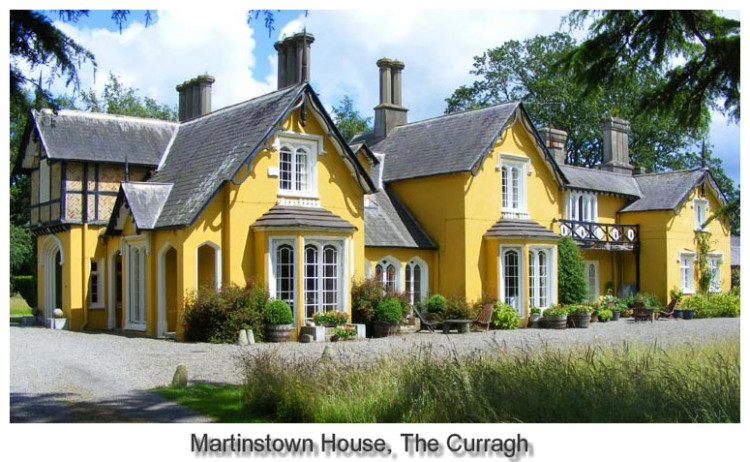
The Republic of Ireland was and still is a neutral country but during WWII there were many Irish volunteers who fought with the allies against the Axis power.Like The first RAF bomber pilot to be shot down and killed in 1939 was Willie Murphy from Cork. His navigator, Larry Slattery, from Thurles, became the longest-serving ‘British’ POW of the war.(pictured below in a Berlin POW hospital bed)

On the other hand there were a great number of Irish who were sympathetic to Hitler and the Nazi regime.One of the most famous ones was the Irish playwright, critic and polemicist George Bernard Shaw.

He despised democracy, supported Lenin, Stalin and the Soviet purges, and denied the Ukrainian Famine happened. He also supported Hitler, and denied the Holocaust happened.After Hitler’s suicide in May 1945, Shaw approved of the formal condolences offered by the Irish Taoiseach, Éamon de Valera, at the German embassy in Dublin.

Shaw disapproved of the postwar trials of the defeated German leaders, as an act of self-righteousness: “We are all potential criminals”.
Charles Henry Bewley was raised in a famous Dublin Quaker business family (Bewleys Coffee and Cafes)and embraced Irish Republicanism and Roman Catholicism. He was the Irish envoy to Berlin who reportedly thwarted efforts to obtain visas for Jews wanting to leave Nazi Germany in the 1930s and to move to the safety of the Irish Free State.

Inhis reports to Dublin during the 1930s he gave the impression that German Jews were not threatened; that they were involved in pornography, abortion and “the international white slave traffic”. He explained the Nuremberg Laws “As the Chancellor pointed out, it amounts to the making of the Jews into a national minority; and as they themselves claim to be a separate race, they should have nothing to complain of.” He reports that he had no knowledge of any “deliberate cruelty on the part of the [German] Government … towards the Jews”. He criticised Irish refugee policy as “inordinately liberal, and facilitating the entry of the wrong class of people” (meaning Jews). Bewley was dismissed just as World War II was breaking out, and never received a pension. However, Joseph Goebbels gave him a job writing propaganda. For a time he worked for a Swedish news agency, which was part of Goebbels’ propaganda machine.

Dr. Adolf Mahr was an Austrian archaeologist who was Gruppenleiter (group leader) of the Dublin branch of the Nazi Party Auslandsorganisation (NSDP-AO).He arrived in Ireland in 1927 to work as keeper of antiquities in the National Museum of Ireland in Dublin.

In 1934 Éamon de Valera appointed Mahr Director of the Museum.As the Nazi Party rose to power in Germany in the 1930s, Mahr joined in 1933 and became the Local Group Leader (Ortsgruppenleiter) in Ireland. During his spell as Nazi leader he recruited roughly 23 Germans. Mahr’s children were raised in Dublin in the 1930s but ended up in post-war Germany.
The IRA supported the Nazis in WW2 (the real ones, not just rhetorical ones). They ran safe houses for Nazi spies, aided Nazi intelligence, and even helped Nazi bombers. They planned to bring about a Nazi German invasion of Ireland, and would no doubt have been installed as a quisling government had Germany occupied Ireland.Chief-of-Staff of the IRA at this time was Seán McCool.
Hitler would of course have done to Ireland what he did to every other country. In the Wannsee Conference notes of Jan 1942, Ireland’s 4,000 Jews were listed for extermination. No doubt Irish quislings would have helped in this, as quislings helped in every other country.

Luckily, the IRA failed in their plans, and the Jews of Ireland were not exterminated.
Andrija Artuković (19 November 1899 – 16 January 1988) was a Croatian lawyer, politician and senior member of the Croatian nationalist and fascist Ustaše organisation, who held the Interior and Justice portfolios in the Government of the Independent State of Croatia during World War II.

He signed into law a number of racial laws against Serbs, Jews and Romani people, and was responsible for a string of concentration camps in which tens of thousands of civilians were murdered and mistreated. On 18 May 1945, British extradited some Croatian ministers and Prime Minister Nikola Mandić to the Yugoslav authorities. Artuković was not extradited, but he was released soon with remaining ministers. He left the British occupational zone, then went via the American to the French occupational zone, where his family was. With a Swiss passport under the pseudonym of Alois Anich, he traveled to Ireland. In 1948, he left Ireland with his wife and children, and entered the United States on a tourist visa and settled in Seal Beach, California.
Helmut Clissman was a German spy, active in Ireland during World War II.When war broke out in 1939, Mr Clissmann was ordered, along with other Germans living in Ireland, to return to Germany. This was later seen by the German intelligence services as a bad mistake, but they tried to use his expert knowledge to find out the strength of the IRA and whether Germany could use it to launch guerrilla attacks and sabotage in Northern Ireland.
Mr Clissmann also played a role in the release of Frank Ryan from a Spanish jail where he was under sentence of death for fighting on the republican side in the Civil War. Mr Clissmann knew Ryan as an IRA activist when in Ireland.

He died on the 6th of November 1997 in Dublin.
Hermann Görtz (15 November 1890 – 23 May 1947) was a German spy in Britain and Ireland before and during World War II.

In the summer of 1940, Görtz parachuted into Ballivor, County Meath, Ireland (Operation Mainau) in an effort to gather information. He moved in with former IRA leader Jim O’Donovan.

His mission was to act as a liaison officer with the IRA and enlist their assistance during a potential German occupation of Britain. However, he soon decided that the IRA was too unreliable. On landing, he lost the ‘Ufa’ transmitter he had parachuted with. Goertz, attired in a Luftwaffe uniform, then walked to Dublin. He was not apprehended despite calling into a Garda barracks in Co Wicklow, asking for directions to Dublin. Goertz made it to Dublin and a “safe-house” at 245 Templeogue Road, Templeogue.
In May 1940, the Irish police raided the home of an IRA member of German descent, Stephen Carroll Held, who had been working with Görtz, at his house at Blackheath Park, Clontarf. They confiscated a parachute, papers, Görtz’s World War I medals, and a number of documents about the defence infrastructure of Ireland. The papers they took included files on possible military targets in Ireland, such as airfields and harbours, as well as detailed plans of the so-called “Plan Kathleen”. This was an IRA plan for the invasion of Northern Ireland with the support of the Nazi military. Held had brought this plan to Germany prior to Görtz’s departure but his superiors had dismissed it as unfeasible.
Görtz went into hiding, staying with sympathizers in the Wicklow area and purposefully avoided contact with IRA safehouses. He remained at large for a total of eighteen months. When another IRA member, Pearse Paul Kelly, visited Goertz’s hiding place in Dublin in November 1941, police arrested them both.
Görtz was interned until the end of the war. He was first detained in Mountjoy Prison but later moved to Custume Barracks, Athlone with nine others.
Hermann Goertz was released from jail in Athlone in August 1946. He went to live in Glenageary and became secretary of a charity called Save The German Children Fund. He was rearrested the following year and served with a deportation order by the Minister for Justice. He claimed to have been in the SS rather than a lieutenant in the Luftwaffe in an attempt to prevent his deportation but this claim was disproved by Irish Military Intelligence (G2) which also “promoted” him to Major when sending him messages allegedly from Germany. On Friday May 23, 1947 he arrived at the Aliens’ Office in Dublin Castle at 9.50am and was told he was being deported to Germany the next day. Although it had been stated to him that the Irish government had specifically requested that he not be handed over to the Soviets, he committed suicide.
The Irish Times reported that he: “Stared disbelievingly at the detective officers. Then suddenly, he took his hand from his trouser pocket, swiftly removed his pipe from between his lips, and slipped a small glass phial into his mouth. One of the police officers sprang at Goertz as he crunched the glass with his teeth. The officer got his hands around Goertz’s neck but failed to prevent most of the poison – believed to be prussic acid – from passing down his throat. Within a few seconds, Goertz collapsed.”He was driven to Mercer’s Hospital and died there shortly after arrival.
Görtz was buried three days later in a Dublin cemetery.

In 1974 his remains were transferred to the German Military Cemetery at Glencree, Co. Wicklow.
Other notable Nazi’s who sought and found refuge in Ireland were Otto Skorzeny and Dutch War Criminal Pieter Menten.
Otto Skorzeny:Hitler’s scarfaced Henchman-Irish Farmer and Mossad Hitman
Forgotten History War Criminal Pieter Menten
Controversially,de Valera formally offered his condolences to the German Minister in Dublin on the death of Adolf Hitler in 1945, in accordance with diplomatic protocol.This did some damage to Ireland, particularly in the United States – and soon afterwards de Valera had a bitter exchange of words with Winston Churchill in two famous radio addresses after the end of the war in Europe.












































You must be logged in to post a comment.